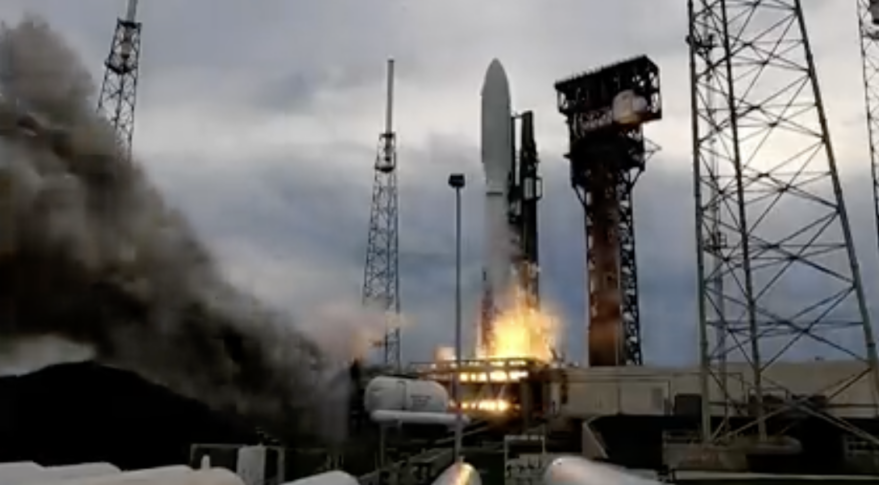
The U.S. Space Force is in the process of defining the framework for Phase 3 of the National Security Space Launch program (NSSL).
The follow-on from the Evolved Expendable Launch Vehicle (EELV) program, NSSL ensures that the Department of Defense has access to launch services to put the most critical military and intelligence collection assets into orbit — assets like GPS, space-based early warning, and other classified payloads. Right now the program’s requirements are being met by two providers: United Launch Alliance (ULA) and SpaceX.
The decisions that will shape Phase 3 are being made against an evolving geopolitical and commercial landscape, which are critical considerations for ensuring the United States has the launch services it needs now and in the future.
Most pressingly, China’s “pacing threat” is accelerating and “continues to mature rapidly.” Lt. Gen. Nina M. Armagno, the director of staff for the U.S. Space Force, warned that China “could catch up and surpass us, absolutely … The progress they’ve made has been stunning, stunningly fast.”
Access to reliable, available launch is the cornerstone of our ability to compete and win in space. At the same time, the commercial launch market is undergoing a revolution, with providers finding increasing demand outpacing supply.
The deployment of SpaceX’s Starlink constellation, Amazon’s Project Kuiper constellation, and OneWeb’s constellation, on top of existing demands on the launch market are expected to strain America’s launch supply. ULA’s CEO, Tory Bruno, recently remarked that the “scarcity environment is a big shift in our industry.” There will be more government and commercial missions than both ULA and SpaceX are really able to fly, he said, “and that’ll be for a number of years.”
Phase 3 an opportunity for change
Phase 3 of NSSL represents an opportunity to make substantive changes to both the assumptions underpinning the program, and to the requirements made of current and potential launch providers. The central tenet of NSSL is that the government has bespoke needs for launch in terms of launch guarantees, integration requirements, and flight characteristics. These needs are undisputed.
However, the process by which the government meets these capabilities is due for a refresh. This is in part reflected by plans of the Assured Access to Space organization within Space Systems Command to field space access, mobility, and logistics capabilities in the very near future.
Rather than artificially constraining the number of launch providers serving government missions, the government should encourage competition among launch providers. This means creating competitive opportunities in Phase 3, as well as on-ramps for future launch companies who can meet the government’s unique requirements, while at the same time revisiting those very requirements.
The focus should be on making smart investments now, creating pathways for onboarding future capabilities, and meeting the government’s demand needs by expanding available supply. Indeed, this has been a central focus of the National Security Space Program at the Center for the Study of the Presidency and Congress: competition breeds innovation and drives down price, both of which are a net benefit for the government and the taxpayer.
Among the objections to expanding providers has been the added cost of mission assurance, staff support, integration studies, and associated support activities. Many of these are predicated on outdated assumptions and modes of operation. Digitization of design, automated monitoring, and other advances, if strategically embraced, can dramatically reduce cost.
The data generated by a Falcon 9 is light-years ahead of a comparable EELV platform, yet in many ways today’s monitoring of Falcon 9 is still predicated on outdated parameters of the latter. Contracting costs can be reduced as well, without appreciable declines in monitoring or deliverables.
The U.S. Space Force’s launch enterprise is demonstrating how effective forward-leaning contracting can be in practice. Embracing multiple sources and types of launch capabilities will help achieve the launch mission with ample supply, creative solutioning, and resilience.
Locking in requirements based on today’s capabilities or needs prevents future iterations and innovations at a time when space technology is rapidly maturing.
Successive generations of technology are exponentially improving capabilities, while decreasing size and weight. While there will likely remain a requirement for the exquisite capabilities, locking in parameters today limits innovation tomorrow.
Bruno is absolutely right when he says, “It’s about making sure [the government] understands the marketplace and encouraging them to focus on the nation’s needs.” The threat from China, the market dynamics, and the innovation of the commercial sector all must be taken into consideration when looking at phase three of national security launch. It’s the only way to ensure America’s economic and national security is preserved on and from orbit.
Joshua Huminski is director of the national security space program at the Center for the Study of the Presidency & Congress and a George Mason University National Security Institute fellow. He can be found @joshuachuminski